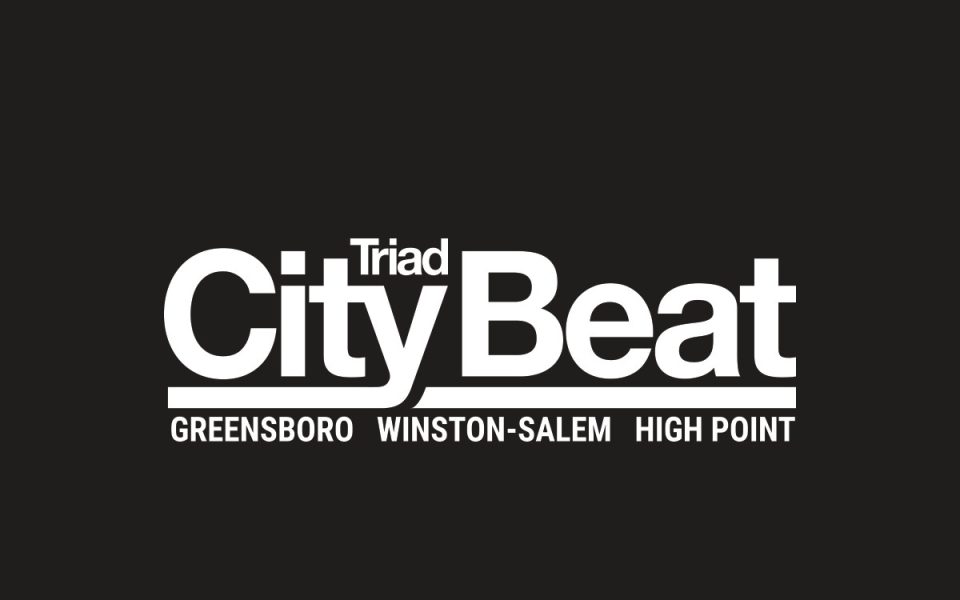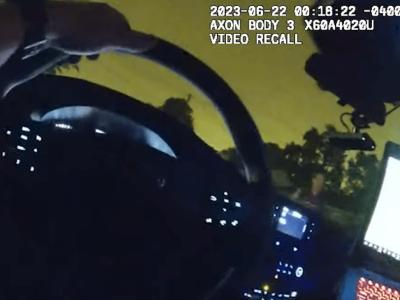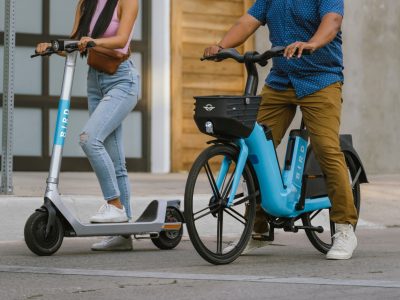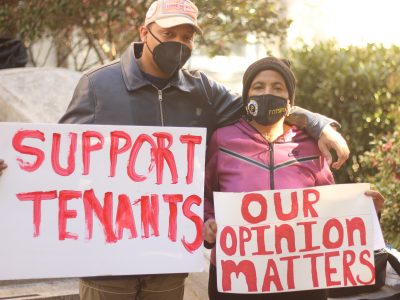by Jordan Green
Restoration of Union Station moves forward without passenger-rail service. Meanwhile, rapid development of the neighboring Wake Forest Innovation Quarter and construction of the new Salem Creek Connector also offer promise to the economically depressed east side of Winston-Salem.
Renovations to Union Station, a 20th Century train station seized by the city of Winston-Salem through a lengthy condemnation process, could begin as early as next summer, but it’s likely to be a long time before the facility is activated as a passenger rail service.
Walter Robbs Callahan & Pierce Architects expects to submit a feasibility study to the city, with recommendations that use of the three-story building be split between city staff, Winston-Salem State University and nonprofits.
Rence Callahan, the firm’s vice president, presented plans for redevelopment of the signature transit facility during a town-hall meeting hosted by East Ward Councilman Derwin Montgomery at United Missionary Baptist Church on Dec. 11. Built in 1926 with stately columns leading into a spacious lobby, Union Station handled as many as 18 daily trains with service to Greensboro, Charlotte and Asheville in the late 1940s, but discontinued service in 1970. Harvey Davis bought the building and converted it into a car-repair shop. Culminating in 2012, the city forced Davis to sell the building through a process of eminent domain over the past 10 years so that it can be returned to service as a transit facility.
“It’s a fabulous piece of architecture at a great location,” Callahan said.
Union Station is located immediately north of Winston-Salem State University on Martin Luther King Jr. Drive between the Norfolk-Southern Railroad and Business 40. In addition to serving as a local and regional transit hub, community leaders envision Union Station as a magnet for retail and restaurants and a catalyst for making MLK Drive more pedestrian friendly.
“People’s expectations are high as to what this will be used for in our community,” Montgomery said. “It’s one of the those catalytic projects in the community.”
Due to the fact that the property was acquired through eminent domain and purchased with federal funds, at least 50 percent of the use of the building is required to be set aside for transportation. And considering there are no plans on the horizon to upgrade the rail line to restore passenger-rail service from Greensboro, Walter Robbs Callahan & Pierce’s various options all call for the facility to provide office space for the Winston-Salem Department of Transportation to fulfill the conditions under which it was required. That’s not a prospect that thrills residents of the historically black east side of Winston-Salem, many of whom would prefer uses that are more business and community oriented. One resident asked how long the city is required to meet the conditions.
“For-ever,” Montgomery replied. “If we ever stop fulfilling the conditions we will have to return the building to Mr. Davis.”
Assistant City Manager Greg Turner said a second track would have to be built to enable high-speed passenger rail, but the corridor is wide enough to accommodate such an expansion. The federal government made major investments in rail in 2009 as part of the stimulus program and found an eager partner at the state level under then Gov. Bev Perdue, a Democrat. The executive mansion has since flipped to Republican Pat McCrory, and the divided federal government has shown little appetite for new rail investment in recent years.
“When we first started down this road there was a strong interest and a plan to do high-speed rail,” Turner said. “Until that pendulum swings back, we will be patient.
“Years ago, the comment was made that a community if it wanted high-speed rail it had to demonstrate the commitment and have the infrastructure,” Turner added. “Union Station demonstrates commitment, and it is the infrastructure.”
Turner said that years ago Piedmont Authority for Regional Transportation, or PART, which operates regional bus service connecting Winston-Salem, Greensboro and High Point, had committed to add a stop at Union Station. But the transit authority has significantly reduced service since then because of budget constraints. Winston-Salem State University students commuting on PART from Greensboro and High Point current must catch a shuttle bus from the Clark Campbell Transportation Center in downtown Winston-Salem to campus.
Callahan also noted that Union Station is proposed as a stop for a streetcar line. However, after studying the idea, Winston-Salem City Council so far opted not to fund the system.
The design concept expected to be recommended to the city includes what Callahan characterized as a “fairly nice restaurant,” which he said would fill a need for dining options at the edge of campus. Other possibilities include a campus bookstore, a retailer that offers Rams clothing and memorabilia, a community resource center and historic exhibits.
Joycelyn Johnson, a community leader who formerly represented the East Ward on city council, asked whether the facility could house a movie theater, but Callahan indicated that proposal is unlikely to be feasible for technical and economic reasons. He also dismissed a suggestion for a recreational rail line as unrealistic considering that Norfolk-Southern Railroad currently uses the track to move freight.
Callahan said his firm will recommend that the roof be replaced immediately. The first floor, which is at ground level with the rail line, will likely be “restored at a minimal level” so that it can be preserved for future repairs to the loading platform.
While plans for the rehabilitation of Union Station move forward, a number of other initiatives with the potential to breathe new life into the east side are also underway.
Just across Highway 52, the 145-acre Wake Forest Innovation Quarter is rapidly developing.
Eric Tomlinson, the research park’s president, said at the meeting that over the past two and a half years the number of people working in Wake Forest Innovation Quarter has increased from about 700 to more than 3,000, making it the fastest growing campus in an urban setting in the United States.
Tomlinson said there are currently 50 companies developing and marketing products nationally from the research park, including Inmar with 900 employees. He said the number of new jobs created is minimal because many of the businesses relocated from other parts of the city, but without the park, Inmar in particular would likely have left Winston-Salem.
Among the developments that continue the research park’s transformation are the completion of Bailey Park, a gathering spot with space for food trucks and soundstages; Wake Forest University’s doctoral medicine program, which is expected to open in 2016; and a $750 million mixed-use project south of Third Street.
Whether the revitalization migrates east across Highway 52 remains an open question, but Montgomery is banking most of his hopes on education and job training.
“We need to understand what’s taking place so we can be part of the process,” Montgomery said. “Many people in our community are asking, ‘How do we get the training to get the jobs?’” he said. “We are moving to what is called a knowledge-based community. That doesn’t necessarily mean that you need a PhD. But these are jobs that require a certain amount of technical ability.”
Meanwhile, several other transportation projects are underway that have the potential to transform the east side. Blythe Construction of Charlotte is excavating ground for the new Salem Creek Parkway to connect Winston-Salem State University to the Wake Forest Innovation Quarter. City council approved funding on Monday night for a streetscaping project that includes enhanced lighting and additional crosswalks.
A $139 million bond referendum approved by voters in November — the first since 2000 — includes $42.4 million for street resurfacing and sidewalks. Four streets in the East Ward are among those across the city that are expected to go out to bid in March: Highland Avenue, Pecan Lane, Solomon Drive and Winston Lake Road. The bond also includes $18 million to pay for the repairs to Union Station.
The revitalization efforts on the east side are part of a bullish attitude overall on public investment in Winston-Salem. The bond fund covers district police stations, park renovation and property acquisition, programs to stabilize distressed residential neighborhoods and struggling commercial districts, funds to develop Merschel Plaza in downtown and money for economic-development grants and loans.
“Our goal is to start construction on a lot of projects in the next 12 to 15 months,” Assistant City Manager Ben Rowe said at the meeting. “We want to demonstrate to the citizens that we’re moving forward.”
Join the First Amendment Society, a membership that goes directly to funding TCB‘s newsroom.
We believe that reporting can save the world.
The TCB First Amendment Society recognizes the vital role of a free, unfettered press with a bundling of local experiences designed to build community, and unique engagements with our newsroom that will help you understand, and shape, local journalism’s critical role in uplifting the people in our cities.
All revenue goes directly into the newsroom as reporters’ salaries and freelance commissions.





Leave a Reply